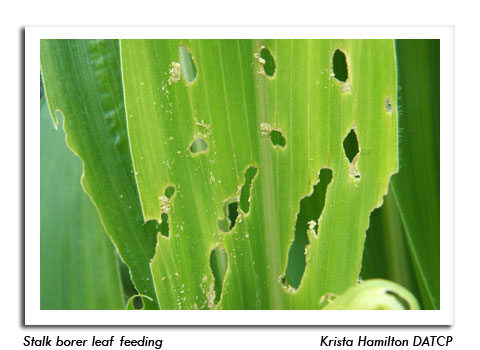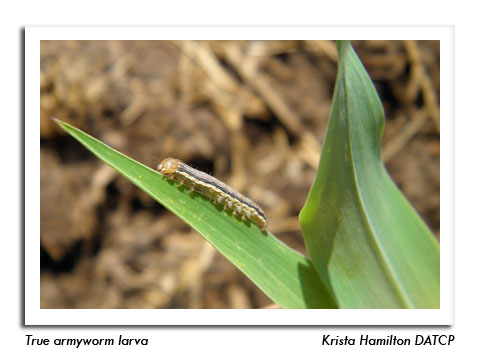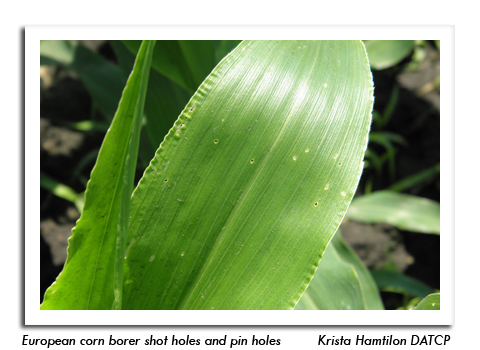
 |
|
|
Corn
Volume 58 Number 8 Date 06/20/2013 STALK BORER - Larvae ranging in size from ½-¾ inch were the cause of light leaf injury to 1-4% of the edge row plants in cornfields in Buffalo, Jackson, Richland and Trempealeau counties. Similar levels of infestation were found late last week in Dane, Green, Rock and Walworth counties. Migration of stalk borers from grass and broadleaf weed hosts into corn is accelerating and spot treatment may be warranted by early July for fields showing 10% of plants with damage. As a reminder, most Bt corn hybrids will suppress but not completely control stalk borers, so field scouting is necessary through the V7 stage. TRUE ARMYWORM - Larval populations are increasing in corn and alfalfa. Surveys conducted in the southern, west-central and north-central counties found light leaf feeding on 1-6% of the plants in the marginal rows of corn fields, while moderate numbers of ½- to ¾-inch larvae were swept from scattered alfalfa fields. A strong potential exists for localized problems to develop in corn, lodged oats and grassy pea fields. As post-emergence herbicides begin killing the grasses in late-planted weedy corn fields, armyworm larvae may concentrate on plants in numbers sufficient to cause serious damage. A rescue treatment is justified if 25% of corn plants are infested with two or more small larvae (¾ inch or shorter) or 75% of plants are infested with larvae of any size. EUROPEAN CORN BORER - The spring flight of moths has peaked in southern and west-central Wisconsin. Black light trap counts have been abnormally low since the flight began during the week of May 16-22, suggesting that the first generation of larvae are also likely to be low. Oviposition is occurring on corn, snap beans, potatoes and various weed hosts and leaf injury by newly-emerged larvae should be apparent in the tallest, non-Bt corn fields next week. WESTERN BEAN CUTWORM - Pheromone traps are now being placed at selected sites statewide in preparation for the annual moth flight. Participants in the western bean cutworm monitoring program should begin reporting counts to Tracy Schilder at tracy.schilder@wisconsin.gov no later than June 26. -- Krista Hamilton, DATCP Entomologist 




|
|
|